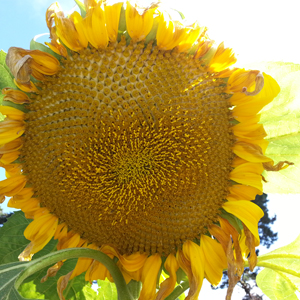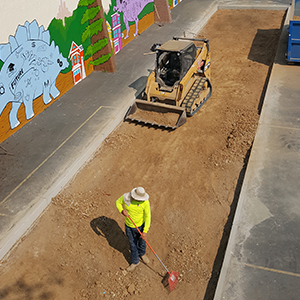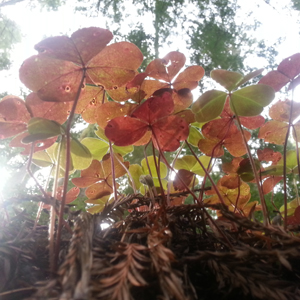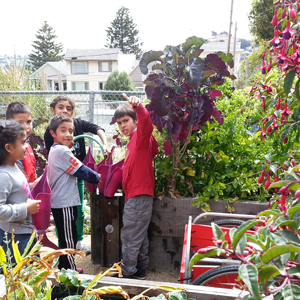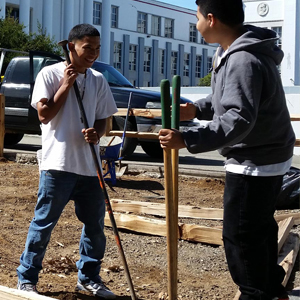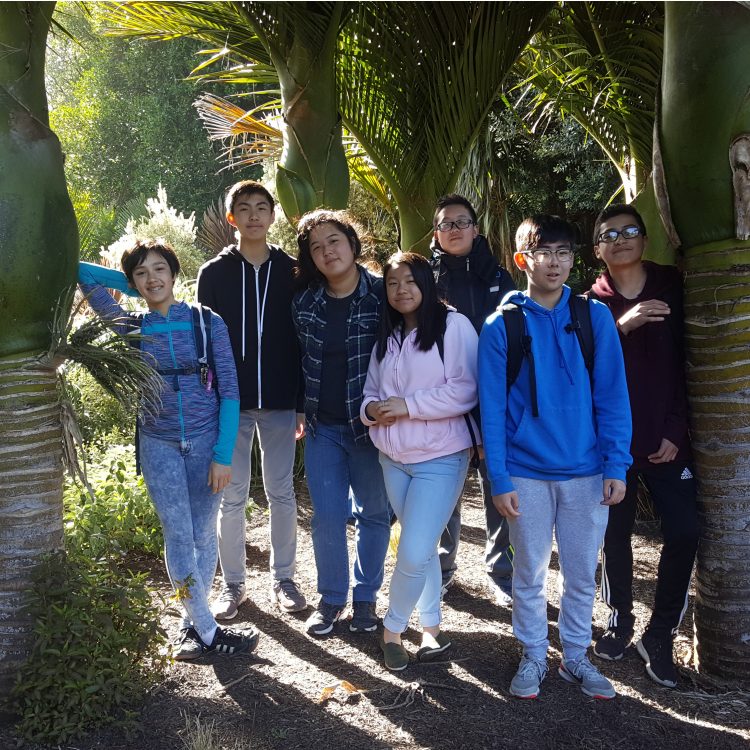
GREEN JOBS
Green Jobs
Current Projects (2020-21)
PAID High School INTERNSHIPS + College APPRENTICESHIPS in urban forestry and carbon management.
CAN! Paid Internships @ George Washington High School (GWHS) @ 600 32nd Avenue, SF, CA 94121
 Since 2015, Climate Action Now! has partnered with George Washington High School educators and administrators, District 1 Supervisors and the SF Public Utilities Commission to facilitate a paid “green jobs” internship on the GWHS campus.
Since 2015, Climate Action Now! has partnered with George Washington High School educators and administrators, District 1 Supervisors and the SF Public Utilities Commission to facilitate a paid “green jobs” internship on the GWHS campus.
Student interns participate in hands-on learning in the field, supporting tree planting and organic gardening throughout the City.
Once hired, interns go on field trips throughout SF (to California Academy of Sciences, the SF Botanical Garden, Golden Gate Park) and dive into the GWHS beehives.
Participants also learn from 12 professional guest speakers in the CAN! “Professionals in Sustainability Series,” which features 12 different guest speakers from the sustainability sector.
 From urban organic farmers to Chinese herbal medicine practitioners, the internship instills the need for leadership in future openings within the City sustainability sectors (from wastewater management to legal initiatives against plastics). Students learn about opportunities that they may not have previously associated with environmental sustainability.
From urban organic farmers to Chinese herbal medicine practitioners, the internship instills the need for leadership in future openings within the City sustainability sectors (from wastewater management to legal initiatives against plastics). Students learn about opportunities that they may not have previously associated with environmental sustainability.
In 2020-21 the internship is entitled “The Climate Action Now! Climate Corps ‘All Stars’.” To ensure student safety and community health, we’re committed to continuing to provide the community with PAID internships for up to 15 GWHS students and/or recent graduates of the large SFUSD high school.
The internship is off to a Zooming start and as we enter fall of 2020, our interns and instructors will all be meeting on Zoom for 25 sessions from October 2020 to May of 2021.
Funding for this program has been generously provided by the SFPUC Community Programs Division. This is the third year the SFPUC has allocated funding from the “Project Learning Partnership Grant” to CAN! to facilitate youth and community professional development.
Former Projects and Partnerships
In 2015 the CAN! Bayview Watershed Project began partnering with the Northridge Cooperative Community Garden (NCCG) to recruit neighbors to participate in sidewalk garden development in the Bayview.
Hiring NCCG youth interns to promote the CAN! Bayview Watershed Project was integral part of the success of the program, providing youth with educational opportunities and green jobs to better their community and the local environment. The NCCG youth interns recruited 43 residential participants to participate in the CAN! Bayview Watershed Project in 2015-2016.
Now, along eight blocks in the Bayview, daisies, sages and other drought-tolerant plants line the sidewalk instead of cement and asphalt.
Participating Streets in the CAN! Bayview Watershed Project include:
Hudson Avenue, Jerrold Avenue, Mendell Avenue, Innes Avenue, Pomona Street, Latona Street, Bayview Street (encompassing both Islais Creek and Yosemite watersheds).


